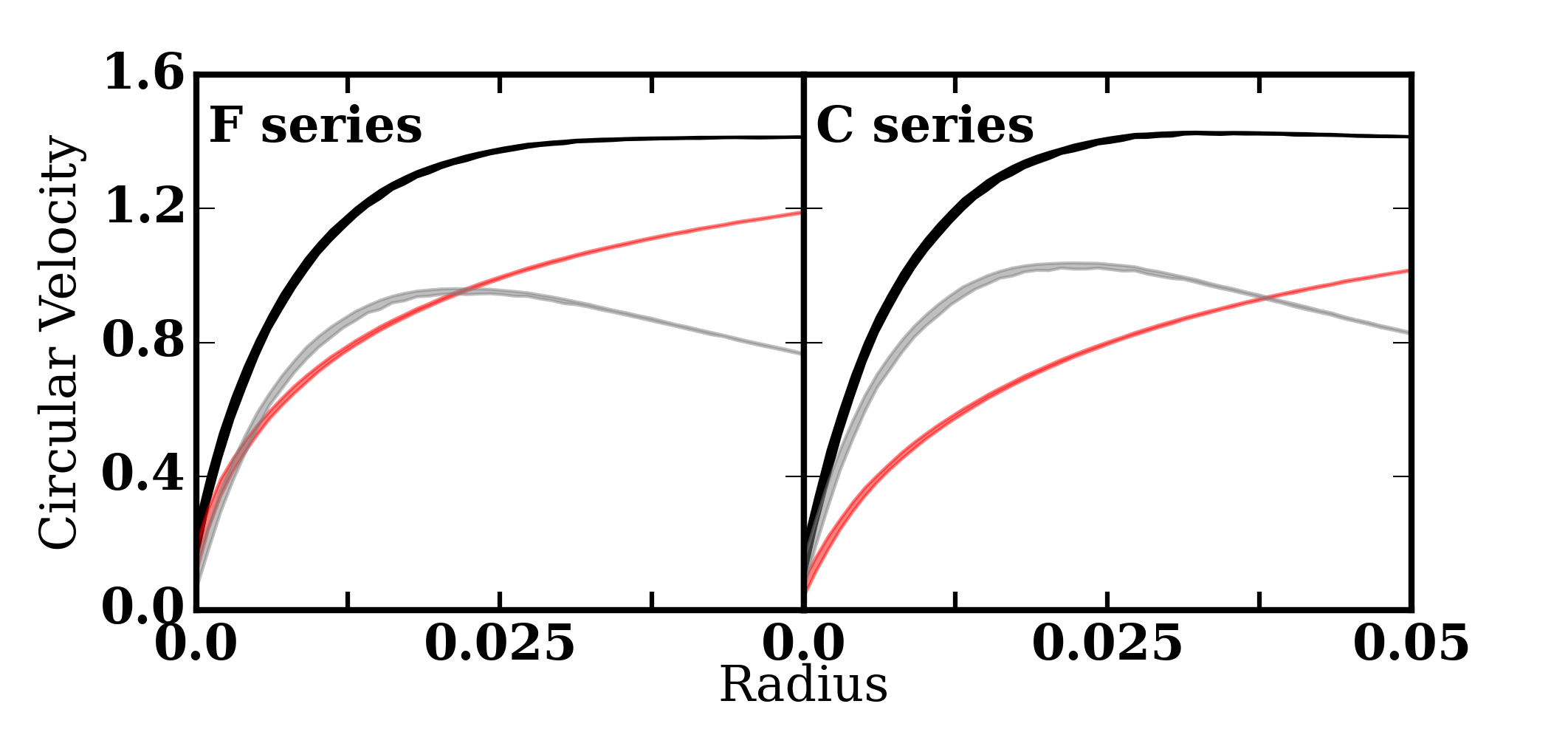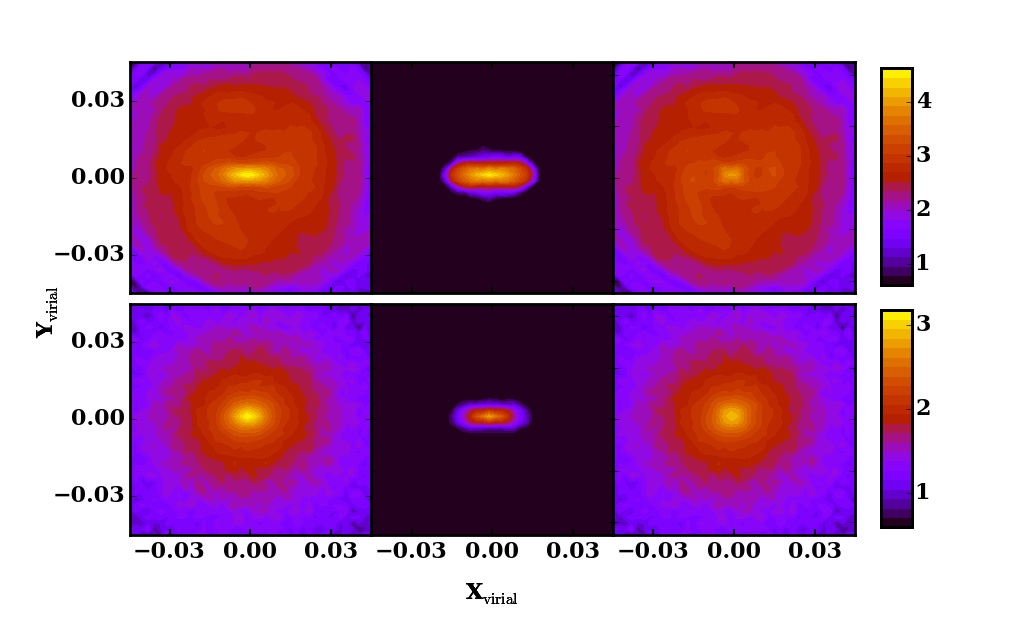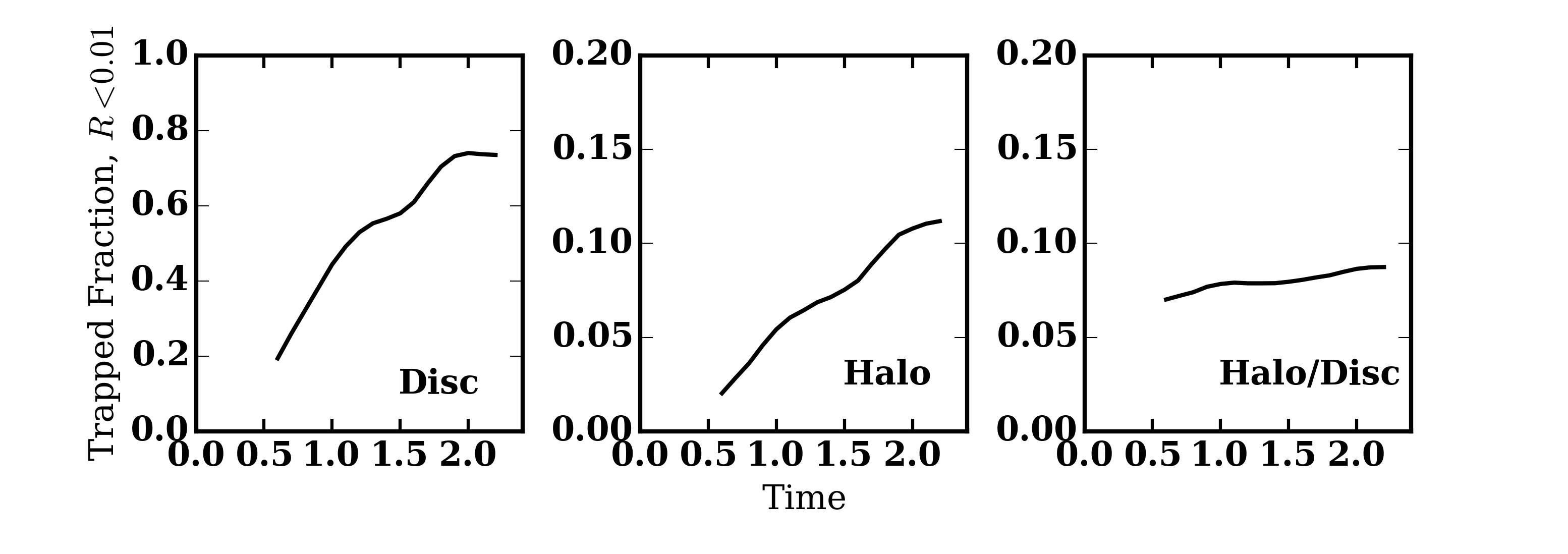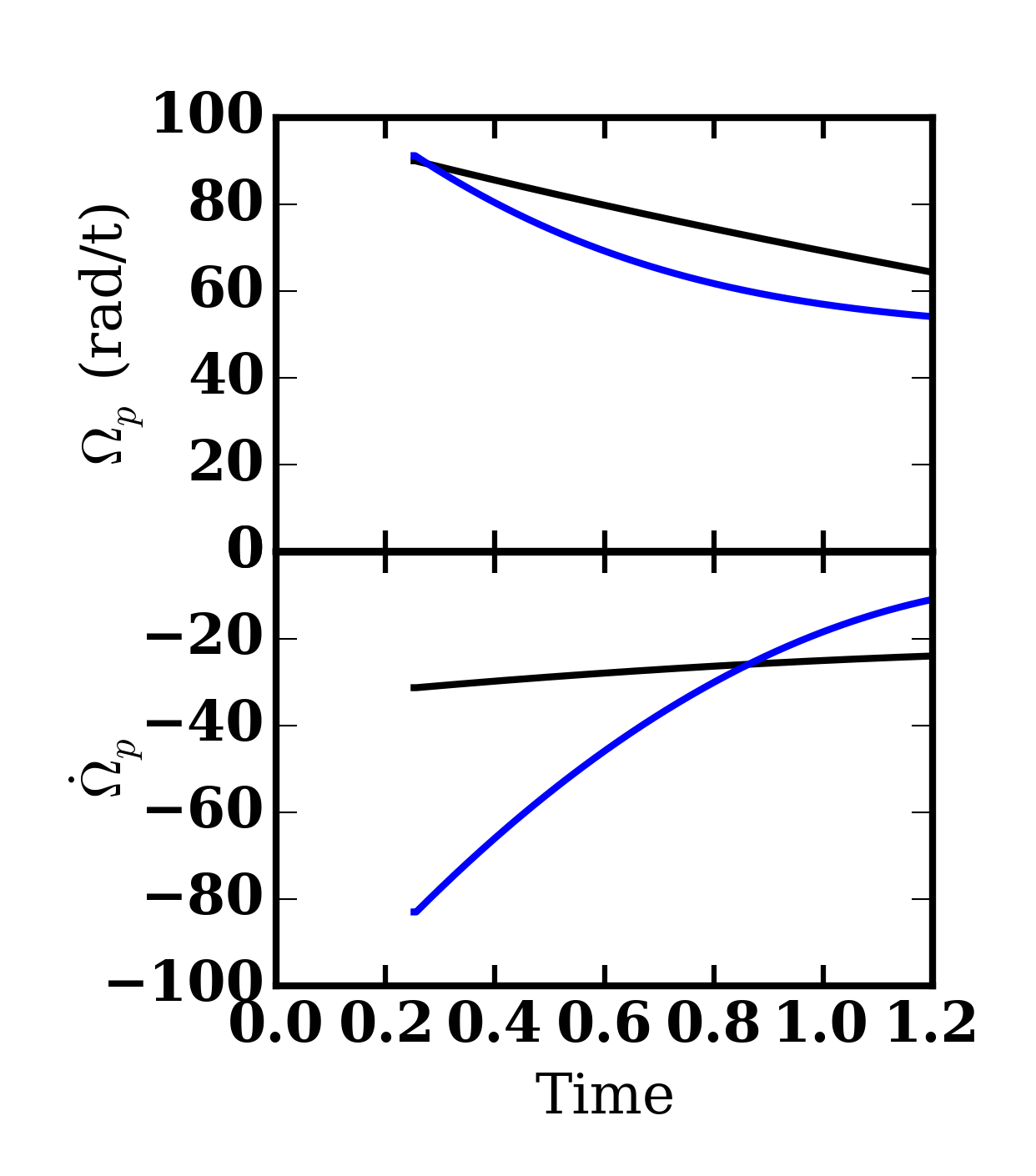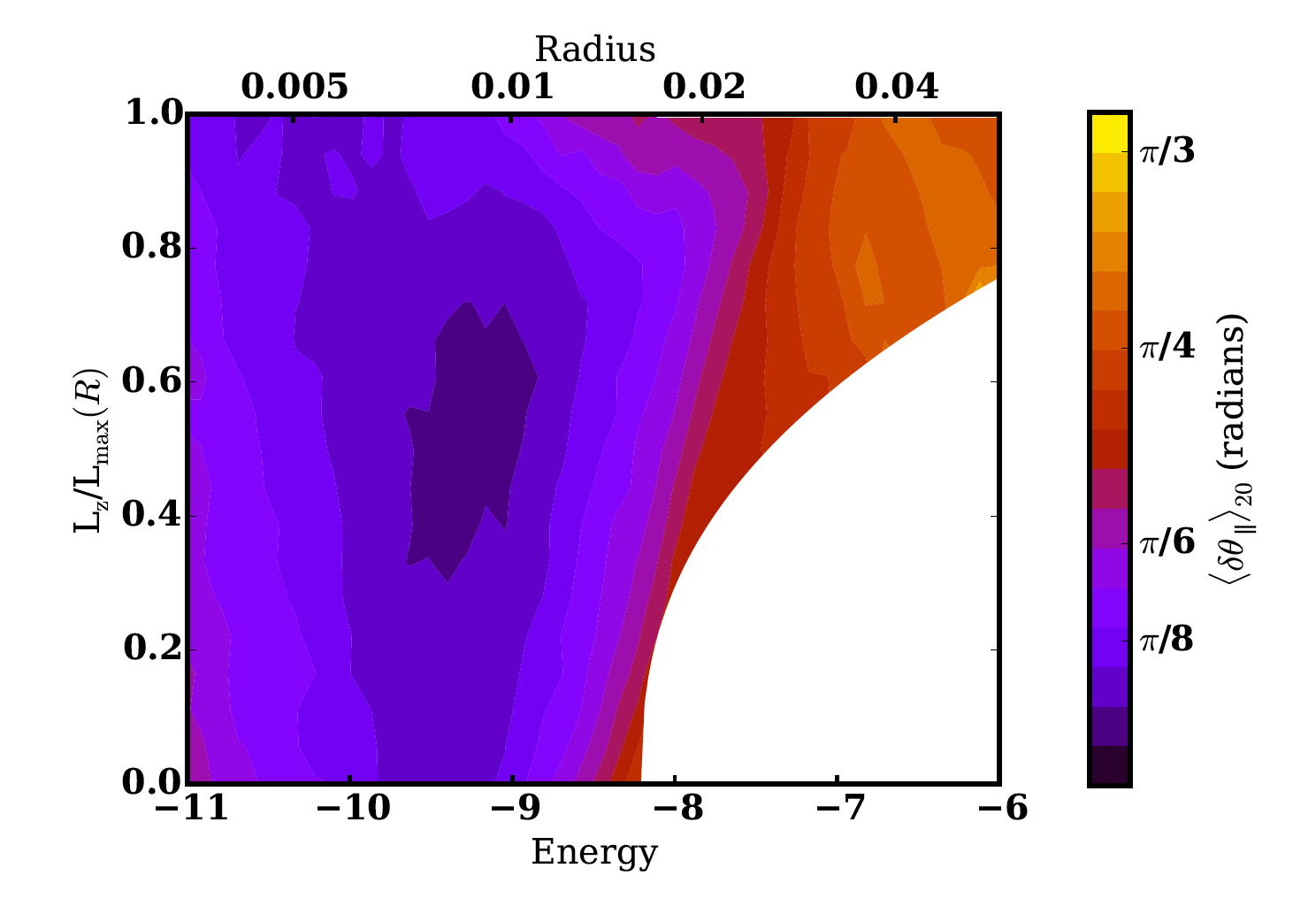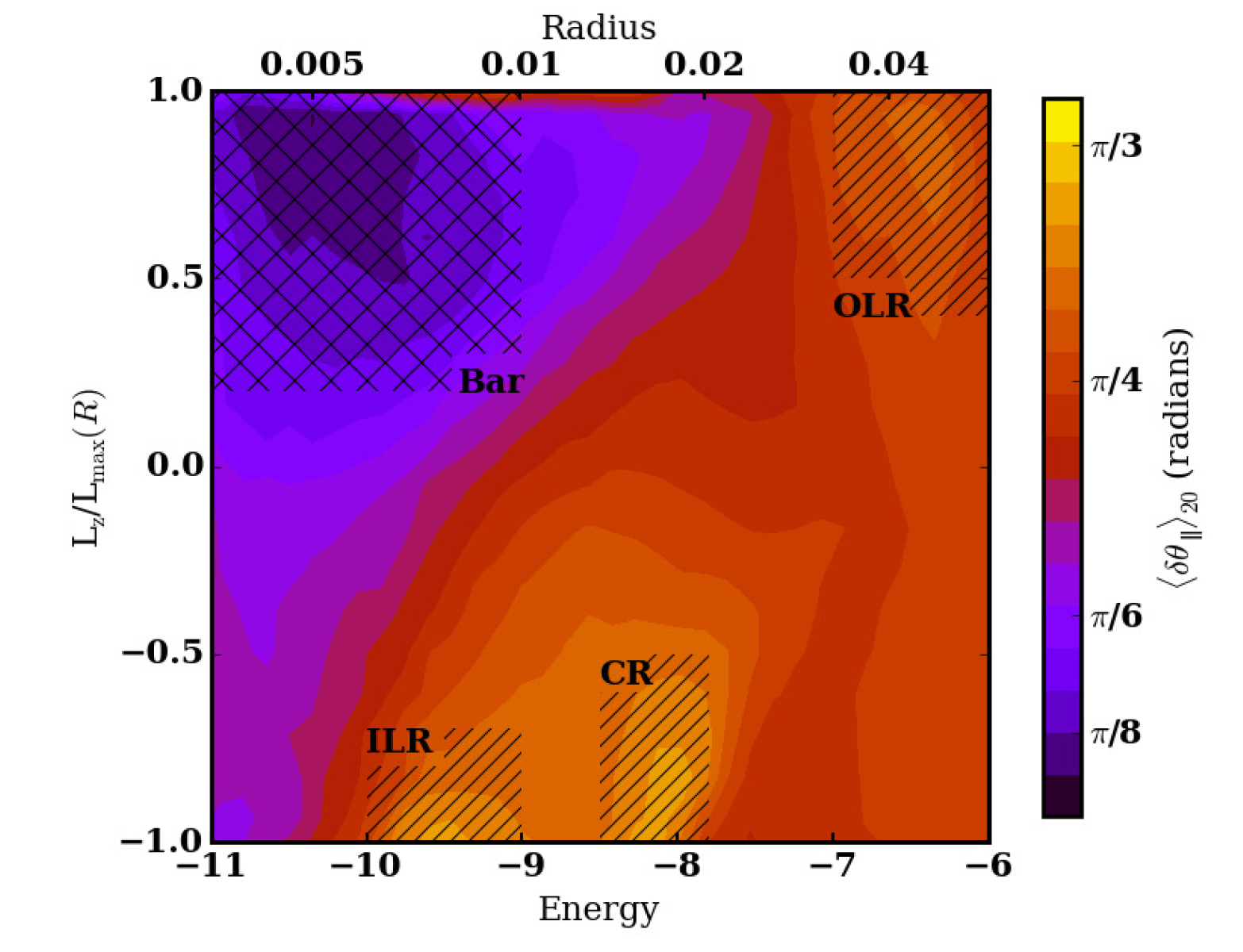Experimental Set-up
The simulations are set up as an exponential stellar disk in an initially spherical NFW profile. We use two different halo models (a cusp model, F, and a core model, C) to increase the applicability of our findings for the uncertain dark matter structure of galaxies.
Initial circular velocity curves for the F-series cusp models (left panel) and C-series cored models (right panel). The circular velocity from p=0.2 to p=0.8 is shown in black where p is the quantile value for the rank-ordered circular velocities. The p=0.2 to p=0.8 contributions from the disc (gray line) and halo (red line) have been separated to demonstrate the maximality of the disc.
Circular velocity curves for the fiducial model at T=0.4 (left panel) and T=2.0 (right panel). The circular velocity from p=0.2 to p=0.8 is shown in black. The p=0.2 to p=0.8 contributions from the disc (gray line) and halo (red line), where p is the quantile value for the rank-ordered circular velocities, have been calculated separately to demonstrate the evolution of each component.
The list of simulations in the paper.
